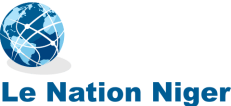The All Africa Leather Fair, which has attracted over 200 exhibitors in leather and leather products, opened here at the Millennium Hall in Addis Ababa.
The continental event has brought together African leather sector actors, leather and leather products exhibitors, sellers, buyers, investors, leather technologists, researchers, innovators, footwear and leather goods fashion and models, input, and equipment traders as well as government representatives and conference participants from around the world.
Opening the exhibition, Industry Minister Melaku Alebel said the trade fair is an important show that links Africa to the rest of the world.
This event will play a great role in initiating the leather industry and reversing the downturn of the leather sector in the aftermath of COVID-19 impacts and international market system failure, he added.
The fair is expected to promote collaboration rather than rivalry among exhibitors, with the ultimate objective of boosting both domestic and foreign investors, the minister said, adding that the fair aims to foster a welcoming business climate throughout Africa.
He pointed out that Ethiopia initiated the “Let Ethiopia Produce” campaign to increase the manufacturing industry’s production and productivity in the leather supply chain through enhancing fair trade and school shoe, bag, and belt production and other schemes.
Ethiopia’s long-term goal is to become Africa’s premier light manufacturing country while simultaneously attaining middle-income status.
“In this respect, special attention is paid to the manufacturing sector, one of which is the leather and leather product and textile businesses, as they are critical for value addition, foreign currency generation, job creation, and knowledge transfer,” Melaku elaborated.
To achieve these objectives, the government will continue its increased efforts to develop and improve the required infrastructure.
Ethiopian Leather Industries Association President, Redman Bedada said the objective of this event is to revive the sector and continue raising awareness of Africa as a place to do business, sourcing destination, change perceptions, and make the value chain on the continent more visible as a source of supply for leather products for domestic, regional, and international buyers and a place for investment for potential investors.
According to him, the leather sector in Ethiopia has registered and achieved structural transformation through value addition by developing capacity in producing finished leather products salable in the global market.
“We, the Ethiopian leather industry community, have great appreciation for the Ethiopian Government’s Ten-year Home-grown Economy Plan and the new initiative ‘Ethiopia Tamret,’ or Let Ethiopia manufacture, followed by the school shoe uniform project, which aims in import substitution and export enhancement that is targeted to increase the share of the manufacturing sector in the economy.”
The association president noted that the exhibition will allow bringing together on one platform manufacturers, buyers, sector specialists, and policymakers to dwell on African investment potential and promote Africa’s leather sector.
The four-day trade fair is organized by the Ethiopian Leather Industries Association, in collaboration with Ministry of Industry, Ministry of Trade and Regional Integration, the United Nations Industrial Development Organization, and other partners.
Source: Ethiopian News Agency
